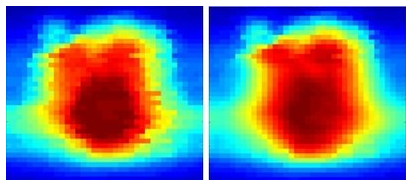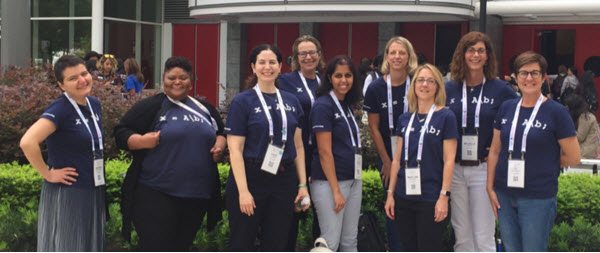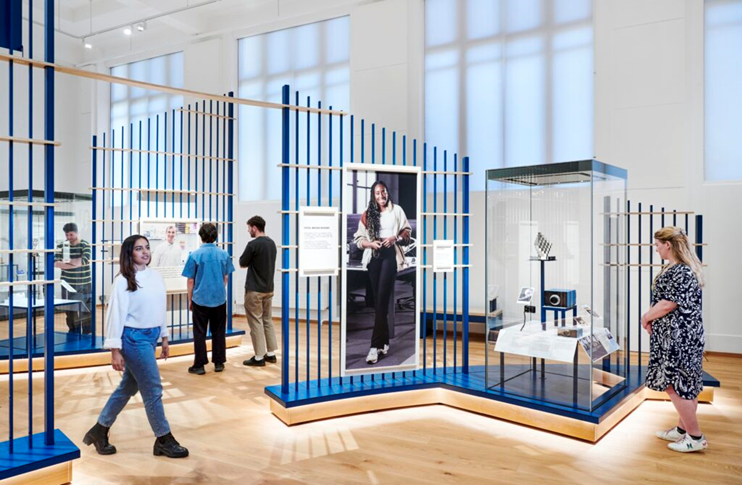SheLovesMATLAB No. 2: Leila Shelley
This post continues the series of stories about women engineers and scientists who use MathWorks products. In this post, MathWorker Anoush Najarian interviews physicist Leila Shelley. Anoush’s interviews appear in this space as an occasional series. This is the second. If you missed the first one, you can find it here!
#shelovesmatlab: Leila Shelley
Interview by Anoush Najarian
We’d like to introduce you to Leila Shelley who goes by @Lady_Physics, University of Cambridge PhD Researcher in the VoxTox Group in Cambridge, England. Our colleague Kim Trumbull came across Leila’s work on Twitter, and what’s below is one of the iconic tweets that brought about #shelovesmatlab, a hashtag that celebrates women engineers and scientists who work with our tools.
Eat MatLab
Breathe MatLab
Sleep MatLab
Repeat#mylife #currentsituation #phdlife #phdchat #matlab— Leila Shelley (@Lady_Physics) February 21, 2018
I use MATLAB pretty much every day so this tweet could apply to any task I’m working on at any given time! MATLAB is a really good tool for handling medical images and radiotherapy dose files in DICOM format so it’s how I process and analyse my data.
Actually, I think this tweet was relating to a batch processing job I’d left running overnight for almost 200 patients, creating and analysing biomechanically deformed ‘dose-surface-maps’ that are generated from CT images, structures, and dose files, stored in DICOM format. There is an inordinate amount of satisfaction that waves over you when your code successfully completes (though inevitably, working with patient data often requires significant manual intervention!).
I completed my undergraduate degree in Physics at The University of Edinburgh in 2008 and then started training as a Medical Physicist with the NHS. The formalised training scheme (through the Institute of Physics and Engineering in Medicine, IPEM) involves practical clinical training alongside a Masters degree. I decided to specialise in radiotherapy because I am fascinated by the interactions between radiation and matter, and because cancer had affected my family directly. Medical physics is a field that combines complex science principles with the reward of advancing healthcare for the benefit of patients.
I loved my job as a Radiotherapy Physicist, but due to the clinical demands on my time, I felt that I was missing opportunities to develop certain skills that were important to me personally (including coding!). It was a difficult decision to leave my job and return to study, but one I feel will benefit my career goals and aspirations in the future. Being an effective researcher is important in the role of a Clinical Scientist and I feel that my experience as a PhD student means that I will be able to effectively lead my own radiotherapy research team one day. It has been a roller-coaster journey, but I wouldn’t change a thing!
I grew up with incredibly strong and supportive female role models in my mum and my granny. Seeing women pave their own careers was the norm for me, and they instilled in me the positive work ethic and self-belief that led me to discover and pursue my own interests and career path.
During my career, there have been three particular women in Medical Physics who made a direct impact on me (more than they are aware of, and I won’t name them but I hope they know who they are). Firstly, my mentor who always went above and beyond any call of duty for any patient or colleague. Whose breadth of knowledge was endless, and who taught me immeasurable lessons through her wealth of experience, always executed with the utmost grace and decorum. Secondly, the first female Head of Department I met, a warm and inviting presence who made me realise that I too could aim for the top. Thirdly, a leader in cancer research who picked me up at a time when I kept being met by brick walls, who went out of her way to encourage me to continue pursuing my ambitions, and whose words prompted me to submit my application to Cambridge. I will forever be in awe of these three women, and hope one day to influence someone the way they did to me.
Although I dabbled a little with MATLAB during a texture analysis project as a Medical Physics trainee, I was never formally taught. I think my BSc/MSc pre-dated the integration of MATLAB teaching in university modules (I did a bit of Java/C/VBA as I recall). I found the online training modules incredibly helpful, and was able to tag along to a one-day course for beginners run by the University. Since the I have learned by trial and error, through building an understanding of others’ code, and utilising invaluable resources such as MATLAB forums and GitHub. I definitely have a lot to learn, but I now think I now know what I’m doing… I’m even looking forward to venturing into Deep Learning!
I am very proud of having my first author publication accepted a top Radiotherapy journal last year, Delivered dose can be a better predictor of rectal toxicity than planned dose in prostate radiotherapy.
This project presents evidence for the first time, that the dose received by the rectum, accumulated throughout the course of prostate radiotherapy, is different from the intended planned dose. This effect was quantified by accounting for the daily motion and deformation of the anatomy using novel imaging techniques. We hope that by advancing knowledge of the true delivered dose, that we can improve upon our current ability to predict toxicity side-effects.

The VoxTox project is highly multidisciplinary, and several of the MATLAB algorithms I use have been developed by my colleagues over the years. These include application in handling and anonymising patient data, autosegmentation of the anatomy, dose calculation based on the daily treatment images, and generation of dose-surface-maps of the rectal wall. The systems I have been developing using MATLAB range from the extraction of complex dosimetric parameters from the dose-surface-maps, to integration with biomechanical modelling softwares to conduct finite element analysis.
MATLAB is an excellent solution for extraction and manipulation of DICOM radiotherapy data, and has a plethora of in-built tools for feature analysis.
Bio

Leila Shelley is a radiotherapy research physicist. Radiotherapy remains one of the most potent curative treatments for cancer, but for many common cancers, up to half of patients treated experience some degree of toxicity. A reduction in these toxic outcomes would benefit patients and bring cost savings to the UK’s National Health Service (NHS).
Her PhD project will provide bioengineering models and analysis tools to predict tissue-tracked dosage mapping. In turn, these will guide the development of patient-specific radiotherapy protocols. The project is embedded within the VoxTox Research Programme (www.voxtox.org) and benefits from the links between Oncology, Medical Physics, Engineering and the Cavendish Laboratory.
 Cleve’s Corner: Cleve Moler on Mathematics and Computing
Cleve’s Corner: Cleve Moler on Mathematics and Computing The MATLAB Blog
The MATLAB Blog Guy on Simulink
Guy on Simulink MATLAB Community
MATLAB Community Artificial Intelligence
Artificial Intelligence Developer Zone
Developer Zone Stuart’s MATLAB Videos
Stuart’s MATLAB Videos Behind the Headlines
Behind the Headlines File Exchange Pick of the Week
File Exchange Pick of the Week Hans on IoT
Hans on IoT Student Lounge
Student Lounge MATLAB ユーザーコミュニティー
MATLAB ユーザーコミュニティー Startups, Accelerators, & Entrepreneurs
Startups, Accelerators, & Entrepreneurs Autonomous Systems
Autonomous Systems Quantitative Finance
Quantitative Finance MATLAB Graphics and App Building
MATLAB Graphics and App Building







Comments
To leave a comment, please click here to sign in to your MathWorks Account or create a new one.